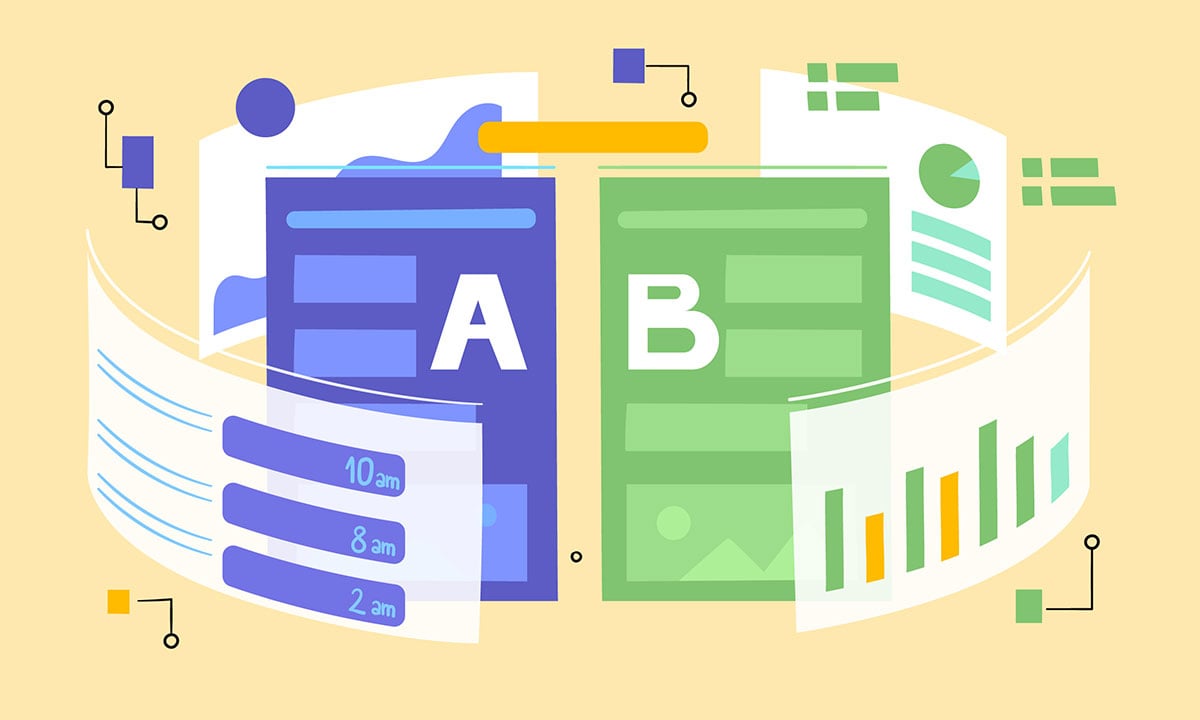A Digital Marketer’s Guide to Google Posts
As digital marketers, we actively welcome new opportunities to communicate with our customers. Google’s social
Delivering an effective email marketing campaign requires more than just hitting send; you need to take the proper steps to maximize your campaign’s potential. But how can you be sure your campaigns are hitting the mark? That’s where CRO comes in. This guide will go over one of the most important aspects of conversion rate optimization: how to run A/B tests on emails.
A/B testing, or split testing, is a way of comparing two different versions of a marketing campaign to see which one performs better. It lets you take out the guesswork of what your audience will respond to and instead make data-driven decisions based on their feedback.
When it comes to email marketing, A/B testing is a great way to help you generate more conversions and continuously adapt your strategies. Most people already have emails flooding their inboxes, so it’s important to find out what captures your audience’s attention and leads them to take action. By personalizing your emails to your target audience, you can better maintain their interest, build loyalty, and drive results.
These six steps of A/B testing email campaigns will equip you with the knowledge you need to see email success.

Before starting your test, you need to determine which specific variable you want to evaluate. It could be the subject line, images, CTA buttons, or any other elements you think could impact your campaign’s performance. For meaningful results, only test one variable at a time. If there are multiple variables you want to test, consider doing so separately or in your next campaign.
Once you’ve figured out which variable to test, you can move on to setting up your campaign. You’ll need two different versions of your email. The control version (A) will serve as your baseline, while the second version (B) will modify the element you want to test. To properly highlight the impact of the tested variable, it’s important to make sure they have enough contrast.
Having an audience large enough to generate reliable data is key, but you need to make sure your sample size strikes a balance. If it’s too big, it may be impractical and harder to detect meaningful results. If it’s too small, it may not have statistical significance. The best sample size is generally in the 10-30% range.
Timing is another factor that can affect your test’s statistical significance. You’ll need to run the test for an adequate amount of time, as rushing it may lead to unreliable data and conclusions. Your timeframe will depend on various factors, like the overall goal of your campaign, any timely offers it contains, and your audience’s typical response time.
When it’s time to run your test, split your sample size evenly between each version, and hit send. Once it’s finished running, take a look at key metrics like open rates, click-through rates, conversions, and other numbers important to your campaign. This will help you identify the winner and determine if the test variable had a significant impact on the results.

You can now send whichever version performed better to the rest of your subscribers. Some platforms even have tools that will do this for you. You can also use the winning version as the new baseline for future tests.
While A/B testing is important, it’s only one aspect of email marketing. There are many other steps you need to take to unlock the full potential of your campaigns. From creating compelling content to designing eye-catching templates, Front Porch Solutions has an experienced email marketing team ready to do what it takes to stand out in your audience’s inbox. Reach out today to get started!
Fill out the form and we’ll be in touch as soon as possible.